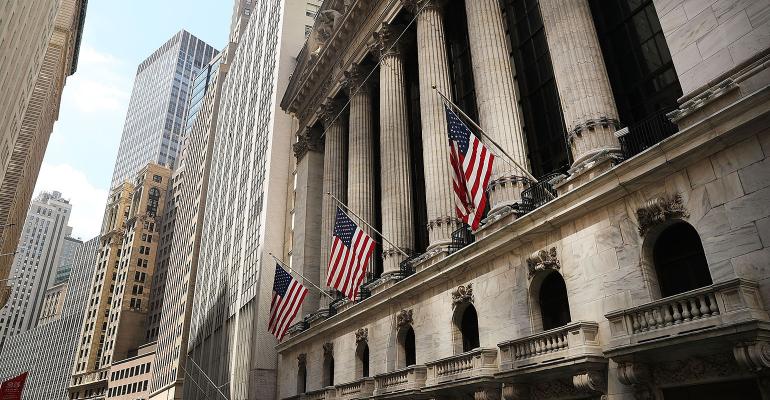(Bloomberg) -- Wall Street banks will soon be able to boost investments in venture capital funds and pocket billions of dollars they’ve had to set aside to backstop derivatives trades as U.S. regulators continue their push to roll back post-crisis constraints.
The Federal Reserve, Office of the Comptroller of the Currency and Federal Deposit Insurance Corp. approved changes to the Volcker Rule Thursday that let banks increase their dealings with certain funds by providing more clarity on what’s allowed. The OCC and FDIC also scrapped a requirement that lenders hold margin when trading derivatives with their affiliates.
Read More: Wall Street’s Win Streak With Trump Regulators Dangles by Thread
The revisions will complete what watchdogs appointed by President Donald Trump have referred to as Volcker 2.0 -- a softening of one of the most controversial regulations included in the 2010 Dodd-Frank Act. Last year, the Fed, FDIC, OCC and other agencies eased the better-known aspect of Volcker that restricts lenders from engaging in proprietary trading -- the practice of making market bets for themselves instead of on behalf of clients.
Thursday’s separate reversal of the interaffiliate margin requirement for swaps trades could free up an estimated $40 billion for Wall Street banks, though regulators added a new speed bump that limits the scale of margin that can be forgiven.
Key Details
- Volcker 2.0 allows banks to take stakes in venture-capital funds that were previously banned in an effort to provide “greater flexibility in sponsoring funds that provide loans to companies.” The change is mostly similar to what regulators proposed last year.
- The Volcker Rule changes were also approved by the Securities and Exchange Commission and Commodity Futures Trading Commission.
- The FDIC board passed the new rule in a 3-1 vote, with Chairman Jelena McWilliams saying the changes “should improve both compliance and supervision.” Democratic board member Martin Gruenberg opposed the move, saying it leaves Volcker “severely weakened” and “risks repeating the mistakes” of the 2008 financial crisis.
- Volcker 2.0 didn’t include all of the industry’s demands for relief. In a March comment letter, Goldman Sachs Group Inc. had urged regulators to eliminate certain Volcker interpretations that have “restricted our ability to invest in certain incubator companies that provide capital and ‘know-how’ to startup companies and entrepreneurs.” The agencies didn’t act on that request.
- In scrapping the requirement that banks post margin for trades between affiliates, regulators did add a new threshold to prevent banks from abusing the relief: If a firm operating under the old rule would have had to set aside initial margin exceeding more than 15% of its so-called “Tier 1” capital, then it still has to set aside margin that surpasses that amount. The demand, which is meant to boost the safety and soundness of the new approach, will force banks to continue calculating on a daily basis what their margin requirements would have been under the rule that’s been eliminated.
- The industry and regulators argued that requiring margin for interaffiliate transactions made it difficult banks to manage their risks. But critics say forcing banks to maintain an extra cushion against losses helped protect subsidiaries that are backed by the federal government, including through deposit insurance.
- The FDIC’s Gruenberg opposed the change to swaps rules, arguing that it removes a critical protection for banks.
- The Fed still has to approve the revision to the margin regulation.
Read More
To contact the reporter on this story:
Jesse Hamilton in Washington at [email protected]
To contact the editors responsible for this story:
Jesse Westbrook at [email protected]
Gregory Mott





